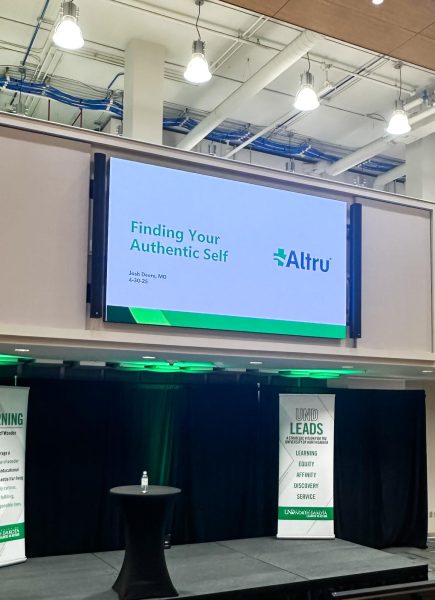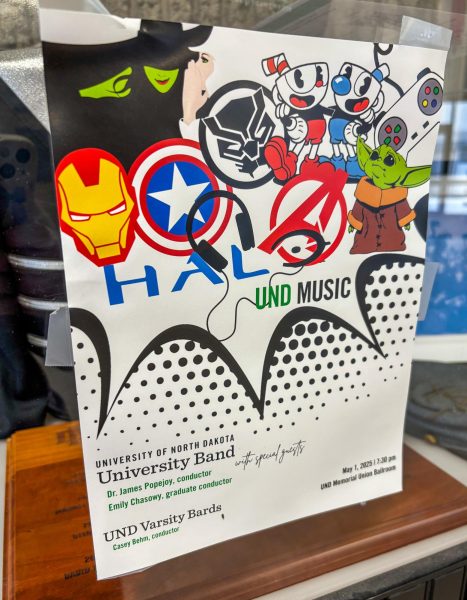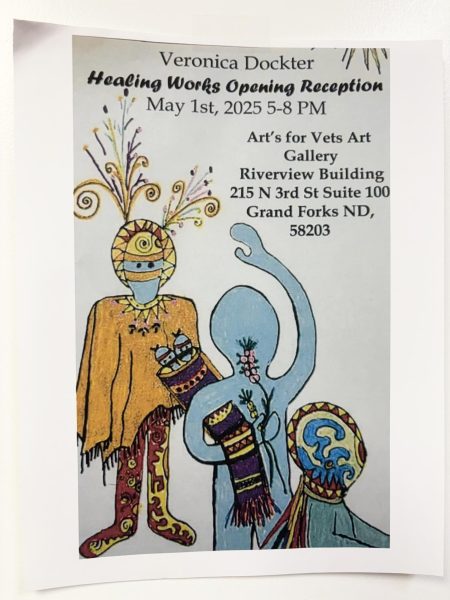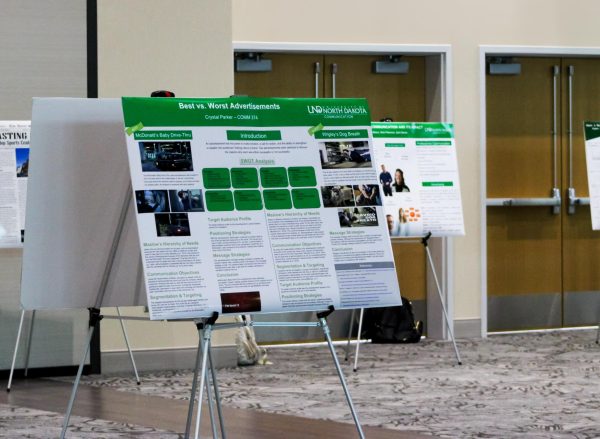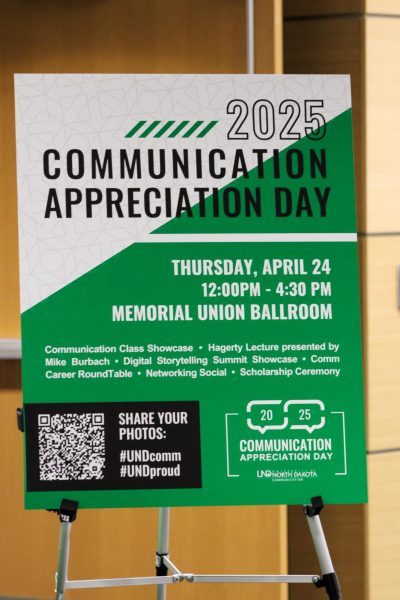Unorthodox teaching style divides classes
Student-teacher role playing used as teaching method in some UND classrooms.
With all the learning styles and techniques utilized in classrooms, one drawing mixed reviews from campus is teacher-student role playing.
Some say having students teach themselves or their classmates can be beneficial.
Valerie Bauer, academic advisor and University 101 teacher, uses this teaching method in her class.
“It’s a helpful role within the teaching process. I do support it,” Bauer said.“I’ve used it a handful of times in different class session depending on the topic or situation.”
Students editing the work of their peers, making class presentations or starting and continuing class discussions are a few ways students can become the educator.
Bauer’s University 101 class is designed to help freshmen adapt to college. The class teaches students useful tips and resources to make the most academically and socially out of their first year through discussion and activities.
English professor Daniela Koleva also uses the method in her composition classes but extends the role to more than one student.
“The way I practice is it is to have more than one such student stepping into the role of the teacher,” she said. “Give everybody a little time to feel like the teacher in the classroom.”
Not everyone is on board with this type of teaching tool namely students who been in classes where it is used.
The University’s Student-Centered Active Learning Environment for Undergraduate Programs (SCALE-UP) classrooms are specially designed for this style of teaching. The classrooms, introduced in 2012, encourage active, collaborative learning.
Freshmen Carolyn Jones and Megan Storkson use the SCALE-UP classrooms for biology and see it as student-teaching role playing, but don’t think it’s the best learning method.
“The students are teaching themselves as well as the table. For myself, I find it more challenging that way. I need to look at notes and listen to what the professor is telling me,” Storkson said. “To have other students who I don’t know, who may not know what they are talking about teach me is kind of hard. I’d rather have the teacher be the teacher.”
Jones believes this method does not cater to each student the way a teacher possibly could.
“To a degree it is a student-teacher roleplay. But on the other hand all students learn differently.
“So you have to find the right people to learn with in that environment, otherwise it’s going to be a challenge for them.”
Students may be nervous at the idea teaching their classmates, but Koleva thinks there is an approach that may remove them from that fear.
“The best way to do it is to improvise — not telling them in advance, ‘get ready to teach the class,’” she said. “But maybe when you see as a teacher this person is ready to offer something, go for the moment. That way you’re trying to avoid this moment of discomfort and nervousness that usually goes with presentation.”
Koleva sees benefits not only to the lesson, but to the classroom experience.
“It stimulates students to jump in and continue the idea of suggestion … the moment of being comfortable if that person that I see doing this,” she said. “It’s more inviting … somebody of my authority equal to me versus the teacher who no matter how much he or she pretends (they are) my equal, I still know this is the person who is judging me and grading me.”
Bauer does understand that points can be missed by a student teaching the class or that others may not be focused, but she stills see a benefit.
“I think that students are going to listen to the topic, if they’re interested … it doesn’t matter who’s presenting it,” she said. “At least at a bare minimum, the students that are presenting that information are going to have a very good handle on that particular content.”
While the method can be tricky to utilize, Koleva still encourages teachers to partake in the exercise.
“Give it a try,” she said. “It doesn’t necessarily have to be pre-organized, it can happen in a number of ways. Find a strategy that works for you best, is my advice for teachers.”
Paula Kaledzi is a staff writer for The Dakota Student. She can be reached at paula.kaledzi@my.und.edu.


